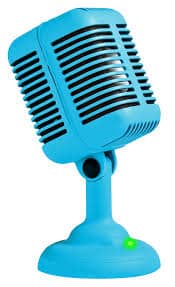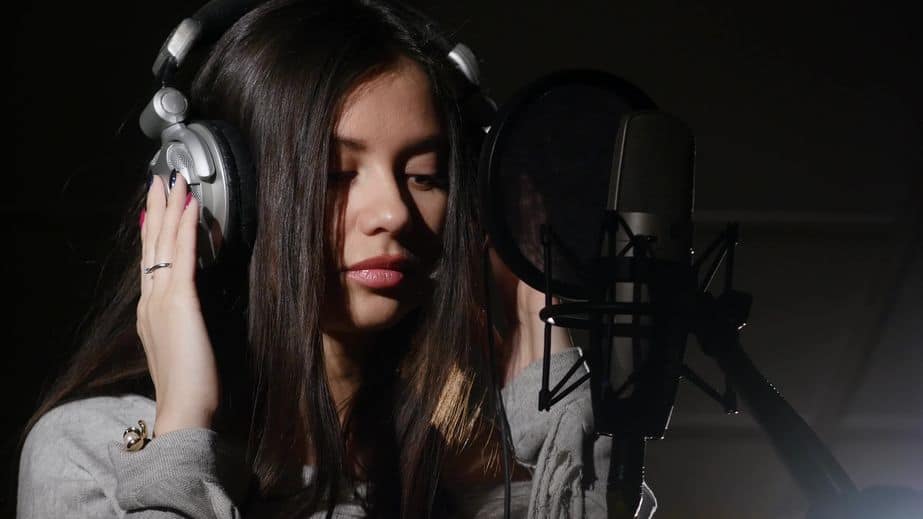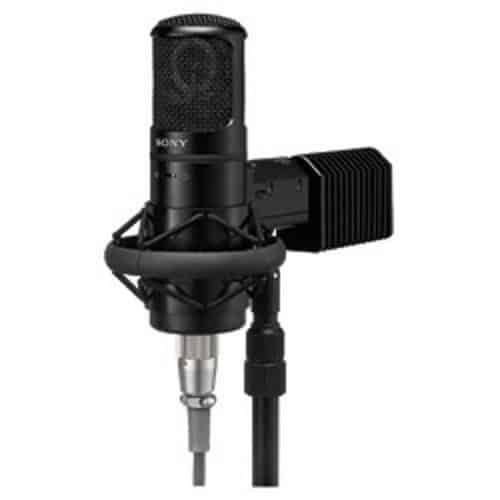There is a big difference between Live Stage and Studio Recording Microphones for Videos or podcasts and even Youtube. Mostly because the sound in the studio is specialized and broken down to create different types of sounds from different types of instruments. What is the Best Budget Microphone for Youtubers?
If you are a serious Podcaster aim for that 300-500 dollar microphone along with a tube analog pre-amp that will add power warmth and color to your sound bringing your recordings and live voice to life regardless of what microphone is in your budget.
If you listened to the famous producers and sound engineers from the history of recording, you would see that they were as important as the musicians making the record. Not so much for DJs, Videomakers, Youtubers, or Podcasters.
Inexpensive Microphones
The use and development of microphones play a key role in broadcasting then and now, of course, capturing music has become more of an art form and a bigger part of the music. While microphones were customized mostly for voices, they became more important for breaking down and capturing sounds of instruments that were never really captured before.
This was the beginning of engineering and producing in the studio recording. As the technology changed so did the job and the credit of the people that operated that technology. Now Because of the internet more and more mics are being used for Youtube videos or Podcasting.
They can run from 100 dollars to $20,000 dollars. This variable helps creates different types of sound. Just as Dynamic Microphones are the preferred mic to use in Live performance Condenser Mics are the preferred mic to use in recording these intricate sounds that fill the audio frequency.
For stage music, Dynamic microphones may work best, but in other applications, such as recording a Condenser microphone will produce the clearest and most nuanced sound. Podcast Mics are either one and don’t have to cost you an arm and a leg.
The name condenser microphone actually refers to a capacitor system, in which two plates with a voltage between them are used to create an electric signal that is then converted back to an acoustic signal through a speaker or monitor. How much of that sound is captured is normally credited to the quality of the mic.
Condenser mics have a thin conductive diaphragm that sits close to a metal backplate. This configuration works like a capacitor where sound pressure vibrates the diaphragm which in turn changes the capacitance to produce the audio signal.
Since they use capacitance instead of actual moving coils, fidelity and sound quality are improved, making these mics ideal for precision recording in the studio. Pick a Mic for Video or Podcasting that will make your voice sound good. Start with a Condenser Mic.
This method of sound capture requires power, so you’ll need a mixer or direct box with phantom power. Whatever instrument you are trying to record, condenser mics will get the job done so long as the sound pressure levels aren’t too high. Just remember to handle them with care as they are not as sturdy as dynamic mics.

Condenser Mics are often expensive and can be used throughout the studio performing all kinds of duties. A good Condenser microphone for studio work has a large diaphragm for capturing more subtle noises that change the feel of the podcast or video. They can capture more detail and be used on numerous instruments in the studio.
The microphone can make all the difference in the world in how your recordings, podcasts, or Youtube videos sound.
sound. I have seen some of my buddies buy expensive multi-track systems with studio monitors and other quality electronic equipment saving the microphones last. By the end, they would end up running out of money and settling for less in a microphone.
There was one thing that didn’t change and that was the price of microphones in comparison to the other components in the studio. I was told numerous times by professionals and articles from pro studio magazines like Home Recording Magazine about the importance of mics.
Home Recording magazine was once the supreme guide to home recording and when the prices dropped on Home Studio equipment and everybody who was a musician became a recording artist/sound engineer/record producer. It was a little confusing at first. Analog to Digital to Analogue.
I used a 500-dollar Rodes Tube condenser microphone that made sounds that were truly wonderful. It was a large diameter and incredibly rich in tone. This mic brought my music a step up the day I plugged it in. The multitrack machine was less money than the microphone. Microphones are extremely important in recording music and making Tubers.
Microphone Testing
Microphones in the studio can be used like any instrument by whoever is using them or controlling them. Using mic techniques and testing it can make a powerful Condenser microphone and Large Diaphram Mic sound completely unique from any other.
Using distance from the microphone a singer or YouTuber can get some beautiful quality and effects just by using the air or “room” in between the mic and the voice delivering the sound.
Try this by simply moving forward and back on top for close recording. You will find a sweet spot that we will be talking about later as we continue in this series on Microphone Placement and techniques.
Experimenting with a mic is a good practice most engineers and people in the know say there is no wrong way to use a mic. If the mic has a sound Pop filter and SPL is not affected, then experiment and work the microphone in close for intimate quality and then farther out to change that emotional feeling produced by the mic and the voice.
All mics have a frequency response that can be used for warmth and color of the sound. A Proximity effect can be realized by moving up closer to the mic. This can boost lower frequency which delivers a completely different feel. So a vocalist can use these capabilities to change the sound of the microphone making it another instrument in the studio.
Higher or lower frequencies, especially on quality mics can be tailored by the vocalist moving in and out along with side to side. There is a slight EQ change when the source is moved to the side on a Uni-direction Cardioid which is a heart shape mic. Record producers and sound engineers study these types of effects for developing their own signature sound.
At or near the same time other types of production tricks to create artistic expressions were being used in production work by Geoge Martin who was using alternative techniques for Beatles albums. The more technology changed the more the recording studio was used as a platform for creativity and experimentation in the art of recording.
Large Diaphragm Condenser Microphones are a good choice for a Home Recording Studio, Podcaster, and You Tubers that make any kind of Video. As we were talking about before they can be used in different locations and for recording numerous instruments. In the studio a good quality Condenser mic is king.
Cheaper mics are harder to find with reliable switches and polar patterns so it’s better to go with the more expensive mics in the studio. USB microphones are now a standard mic in some studios and Home Recording.
They use phantom power like Condenser mics do, drawing power from a tablet or computer but are not rated as well as regular Condenser mics for recording in the better studios.
Making videos YouTubing has been going up in popularity for a while especially with the advance of Condenser mic made for hard drive recording and Condensers with XLR connectors. These microphones made for the Home Recording craze are Large Diaphragm Condenser mics that all cost around 100 dollars. They work well and are of good quality.

- The Audio Technica AT 2010 is a hand-held medium diaphragm that has a Cardioid Polar pattern and can be used in a live or studio setting. It has a max SPL of 136 dB which gives it the ability to handle higher sounds and has a Frequency Response of 40Hz to 20kHz. and a signal-to-noise ratio of 71 dB.
- You can find this mic for under 100 dollars. This mic is a fine quality mic in the same league as a Shure SM 57 & SM 58 also in this range.
- The Neumann U 87 a Cardioid Microphone is an Above-Mid Priced with super good quality mic that is used in Pro studios. It uses 3 switchable Directional positions. The Omnidirectional, Cardioid, and Figure 8. The frequency response is 20Hz to 20kHz and the dynamic range is 115 dB
The Sony C800GPAC Studio Microphone is a top-of-the-line Studio Professional microphone.
This top of the line studio microphones is very expensive. The Pro mic is detailed, vibrant, and crisp known for a brilliant low-end spectrum a operates with a vacuum tube with a unique Peltier-based cooling system to allow the proper temperature for the tube to work. It works electronically to switch Polar Patterns and a high -33 dB sensitivity that rounds out this device that makes it one of the best for recording voice and acoustic guitar.
I have used 1000-dollar Rode’s Tube microphones and they were incredible. I have also used 100-dollar USB mics and they sounded good. The problem with the digital world now and how perfect it is is that people now expect perfect and nothing less than perfect. You need to pre-amp the mic to make it sound better.
Best Mic Preamp
If you are a serious Podcaster aim for that 300-500 dollar Tube microphone and use a pre-amp. You can get pretty incredible sounds you know the Whoooooosh Analog sound that brings your recordings to life.

PreSonus BlueTube DP V2 2-Channel Mic/Instrument Tube Preamp will create warm Power color and will deliver the higher highs and the lower lows. It will take you out of the digital tinty sound and bring you to beautiful rich analog sound that you won’t get from a computer or a digital multi-track recorder.
If you are using a couple of hundred-dollar mics or a 10,000-dollar microphone, the pre-amp is necessary and vital to bring out the best in overall sound and make you sound like you are broadcasting from a studio. The pre-amps are less than 200 dollars and can take your recordings a step up. Try
- A Condenser pencil mic for your acoustic. I use an AKG Perception 170 Condenser mic that was made for drums but I love the way it sounds and records it’s fairly priced too. Also in the lower-end budget that will do the job for a YouTube Video but a better way is:
- A large Diaphragm Condenser microphone for your voice. The microphone should be a Cardioid Polar Pattern and Unidirectional.
- Used with the Presonus Pre-amp which has phantom power that will drive your Condenser Mic. and will make everything record in a rich, analog, and tube ambiance that is full and beefy to your ears.
For YouTubing or Podcasting Think Condenser with a Large Diaphram but you can also start with a lower-priced Small Diaphram and then upgrade later on.
JimGalloway/Author/Editor





